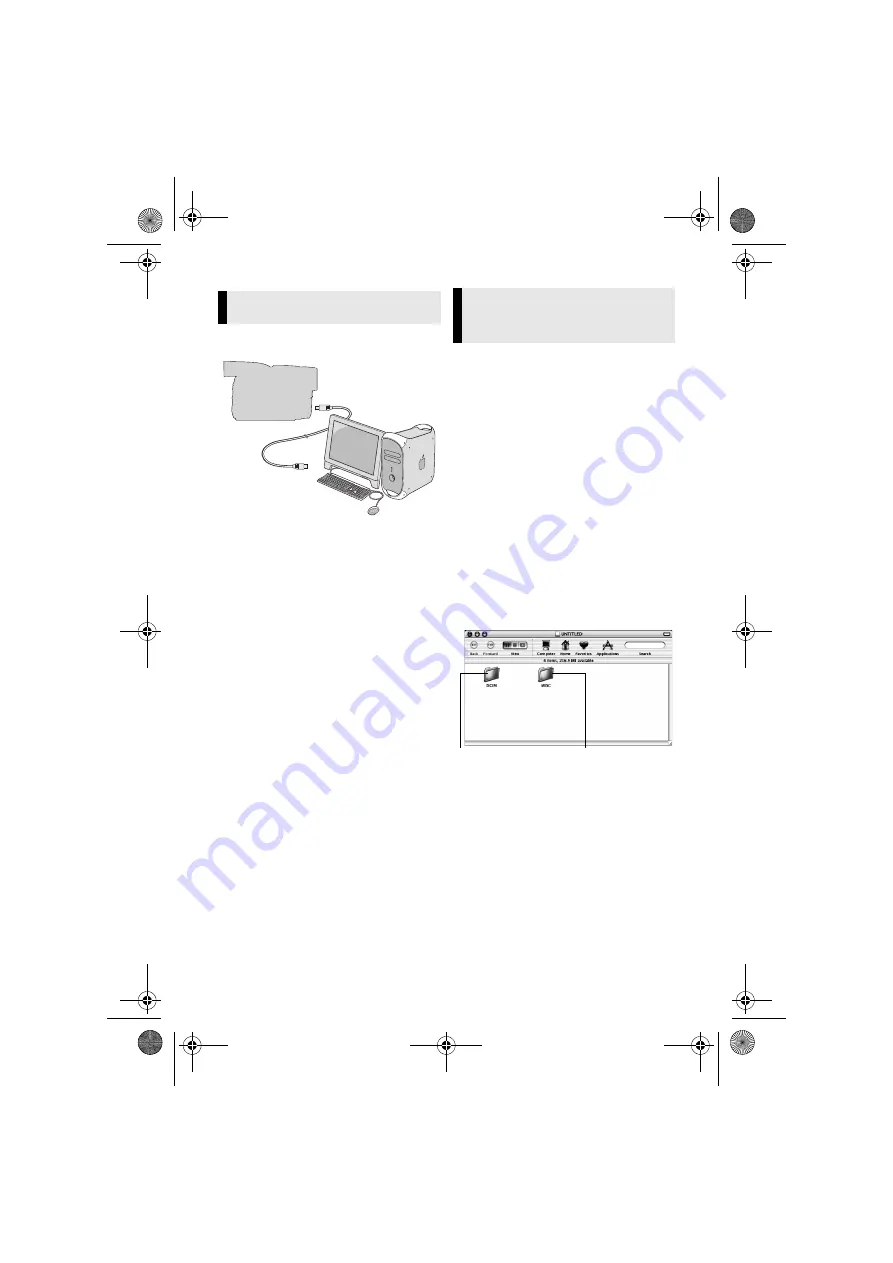
— 9 —
Master Page: Left
Connect the USB cable to copy still image
files in a memory card to the PC.
1
To assure safety, make sure all
units are turned off before
making any connections.
2
Use the USB cable to connect
the camcorder to the PC.
NOTES:
●
It is recommended to use the AC
Adapter as the power supply instead
of the battery pack.
●
When the USB cable is connected,
turning on or off the camcorder or
switching the VIDEO/MEMORY (DSC)
mode on the camcorder causes
malfunctions of the PC.
●
If you connect the camcorder to the PC
through a USB hub, compatibility issues
between the hub and the PC may result
in instability in the operation of the PC.
If this happens, connect the camcorder
directly to the PC, not through the hub.
●
Do not use an extension USB cable.
1
Make sure that there is a
memory card in the camcorder.
2
Set the camcorder’s VIDEO/
MEMORY Switch to
“MEMORY”.
3
Set the camcorder’s Power
Switch to “PLAY” while
pressing down the Lock Button
located on the switch.
4
Connect the camcorder to the
PC with a USB cable. (
墌
pg. 9)
On the camcorder’s LCD monitor
[USB] appears. The memory card
icon appears on the desktop.
●
Depending on the type of OS used,
iPhoto starts if the memory card
contains a DCIM folder.
5
Double-click the memory card
icon on the desktop.
The folders in the memory card
appear.
Different file types are stored in
different folders.
[DCIM]
: Contains folders with still
images (extension “.jpg”)
[MISC]
: Contains folders with DPOF
setting data
Connections (Macintosh)
Camcorder
To USB
Connector
To USB
Connector
USB Cable
PC
Viewing the Contents of a
Memory Card (Macintosh)
Still images
DPOF Setting data
CONTINUED ON NEXT PAGE
M7D1.book Page 9 Friday, November 3, 2006 1:32 PM


















